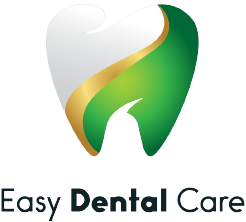Clear Ortho Aligners
Aligners are one of many technological advancements that have made orthodontic treatment less conspicuous, and one of many “appliances” orthodontists use to move teeth and align jaws to create a healthy, beautiful smile.
Like traditional braces, aligners are designed to move teeth a little at a time. Before treatment begins, the orthodontist will examine the patient, and take diagnostic records including x-rays, photographs, and impressions or digital scans of the teeth. From that information, the orthodontist can arrive at a diagnosis, and then work within the aligner software to design your smile and plan the treatment process – which tooth moves where, and in what order – guiding teeth into healthy positions. Remember, this is all of the teeth – not just the few that are seen when someone smiles. The goal is a healthy “bite” – top and bottom teeth that fit together properly. Moving teeth is a complex biological process and needs start-to-finish supervision by an orthodontist who is a member of the American Association of Orthodontists (AAO). Most people see their orthodontist for a check-up about every six-to-ten weeks.
With the end goal in mind, a series of plastic aligners are created using the patient’s initial impressions or digital scans as the starting point. The aligners are plastic replicas of your teeth. Wearing them puts gentle pressure on the teeth, ever-so-slightly repositioning them. It is recommended aligners be worn 22 hours a day, or as prescribed by the orthodontist. Each set of aligners is worn for a week or two before going to the next set. Over time, teeth reach their ideal places, according to the orthodontist’s plan. The total number of aligners will vary by the needs of each patient. As with traditional braces, patients will need to wear retainers after their teeth reach their new positions.
Pros & Cons
Besides being next-to-invisible, many patients appreciate that aligners are removable. Take them out to eat, to brush and floss, or for short periods for work or social situations.
Aligners may not be the right “appliance” to correct every kind of orthodontic problem. Braces may be necessary for certain kinds of corrections.
With clear aligners, tooth-colored attachments will be placed on the teeth to help the aligners move the teeth. These attachments are removed once treatment is complete.
Care needs to be taken regarding drinks when aligners are in, and anything but tap water should be avoided. Liquid can seep into the aligners, and it stays there, in contact with the teeth, until aligners are removed. This can lead to staining of the aligner and the teeth, and if the liquid contains sugar and/or acid, as found in regular and diet soda pop, cavities can develop. So avoid soda pop, along with flavored water, fruit drinks, sports drinks and energy drinks. Even some bottled water can be acidic!
If you drink something sugary or acidic (a pH below 7.0), be sure to brush thoroughly before putting your aligners back in. And use fluoride toothpaste – it strengthens teeth.
Because aligners are removable, patients might be tempted to remove them if they experience some discomfort. Aligners can’t work unless they are in the mouth! They can be lost or misplaced when out of the mouth. Make it a habit to slip aligners into their case when they come out of the mouth. Do not place aligners in napkins, in a pocket or a purse. Also keep aligners out of the reach of pets.
Procedures

Preventive Dentistry

Cosmetic Dentistry

Root Canals

Dentures

Braces

Wisdom Teeth Removal

Sedation

Oral Surgery

Clear Ortho Aligners
